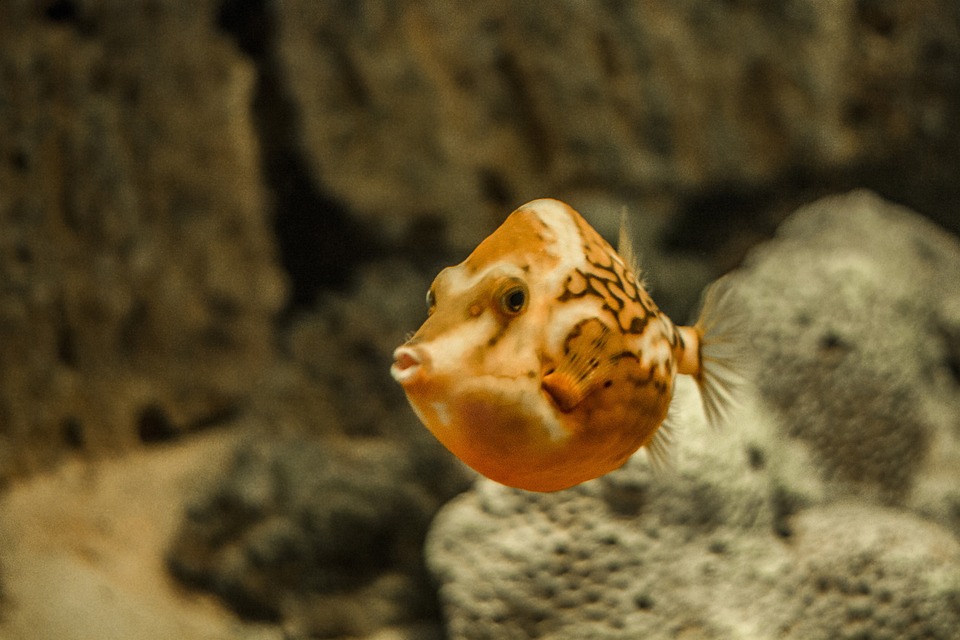Fish are remarkable creatures that inhabit various aquatic environments across the globe. While we often associate sleep with mammals and birds, fish also exhibit fascinating sleeping patterns. In this article, we will delve into the unique sleep behaviors of fish, shedding light on their resting habits and the scientific explanations behind them. Additionally, we will address frequently asked questions to provide a comprehensive understanding of fish sleep.
Fish Sleep: An Overview
Sleep in fish is defined as a period of reduced activity and responsiveness, accompanied by changes in brain activity and physiological processes. However, the sleep patterns observed in fish differ from those observed in mammals and birds. Fish exhibit three main categories of sleep: synchronous sleep, asynchronous sleep, and unihemispheric sleep.
Synchronous sleep is characterized by a whole-school nap, where all the fish in a group sleep simultaneously. During this time, the fish may hover in place or rest on the bottom of the water. Examples of fish species that exhibit synchronous sleep include certain species of parrotfish and wrasses.
Asynchronous sleep, on the other hand, is a staggered slumber where different fish in a group sleep at different times. This pattern allows some members of the group to remain vigilant while others rest. Asynchronous sleep is commonly observed in schooling fish, such as herring and sardines.
Unihemispheric sleep is a unique sleep pattern where only one half of the fish’s brain sleeps at a time, while the other half remains awake. This allows the fish to rest while still being able to perform necessary functions such as swimming and maintaining balance. Examples of fish species that exhibit unihemispheric sleep include dolphins and some species of sharks.
Factors Influencing Fish Sleep
Several environmental factors can influence fish sleep patterns. Light levels and photoperiod play a significant role in regulating sleep in fish. Just like humans, fish have internal circadian rhythms that are influenced by light and darkness. Changes in light levels can trigger sleep or wakefulness in fish.
Water temperature and oxygen levels also affect fish sleep. Higher water temperatures can increase metabolic activity, making fish more active and reducing their need for sleep. Conversely, lower temperatures can decrease activity and promote sleep. Oxygen levels in the water also impact fish sleep, as low oxygen levels can cause fish to become more sluggish and less active.
Predation risk and shelter availability are other factors that influence fish sleep. Fish have evolved various sleep adaptations to avoid predators. Some fish sleep in groups or near structures that provide protection, while others exhibit camouflage behaviors during sleep. The availability of suitable shelter can also impact fish sleep, as it provides a sense of security and allows them to rest more easily.
Why Do Fish Sleep?
Sleep serves several important functions for fish. Rest and recovery are crucial for their overall well-being. During sleep, fish can repair and regenerate tissues, replenish energy stores, and recover from the demands of swimming and foraging. Sleep also plays a role in energy conservation, as it allows fish to conserve energy by reducing activity levels.
Memory consolidation is another function of sleep in fish. Sleep has been found to enhance learning and memory retention in various species, including fish. It helps consolidate newly acquired information, improving their ability to navigate their environment and find food sources.
Furthermore, sleep is believed to support the fish’s immune system. During sleep, the fish’s immune system can function more efficiently, helping to fight off infections and diseases. Sleep deprivation can weaken the immune system and make fish more susceptible to illness.
Frequently Asked Questions (FAQs)
Q1. Do all fish sleep?
A1. Yes, all fish exhibit some form of sleep or rest, although the patterns and durations may vary between species.
Q2. How do fish breathe while sleeping?
A2. Fish have specialized structures, such as gills, that allow them to extract oxygen from the water even while they are resting or sleeping.
Q3. Can fish dream during their sleep?
A3. The concept of dreaming is difficult to study in fish due to their different brain structures. While it is not yet fully understood if fish dream, they do exhibit various sleep behaviors and brain activity associated with sleep.
Q4. How long do fish sleep?
A4. The duration of sleep in fish can vary greatly depending on the species, environmental conditions, and individual needs. Some fish may sleep for a few minutes at a time, while others may sleep for several hours.
Q5. Can fish suffer from insomnia or sleep disorders?
A5. While sleep disorders in fish have not been extensively studied, it is possible for fish to experience disruptions in their sleep patterns due to environmental disturbances or health issues.
Conclusion
Fish sleep patterns offer a fascinating insight into the diverse world of aquatic life. From synchronous whole-school naps to unihemispheric half-brain rest, these behaviors are shaped by various environmental and biological factors. Understanding fish sleep not only enhances our knowledge of their resting habits but also sheds light on the intricate mechanisms governing sleep across different species. As we continue to explore and study fish sleep, we gain a deeper appreciation for the complexity and diversity of the natural world.









